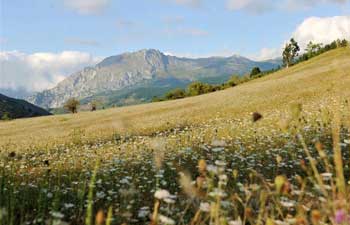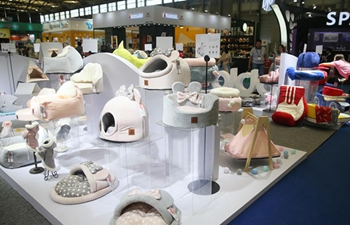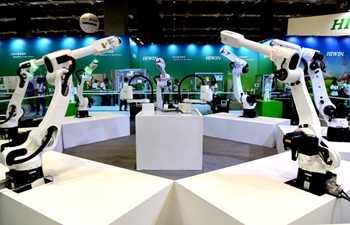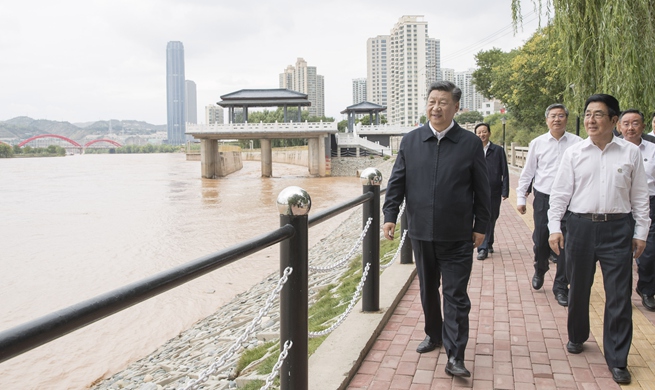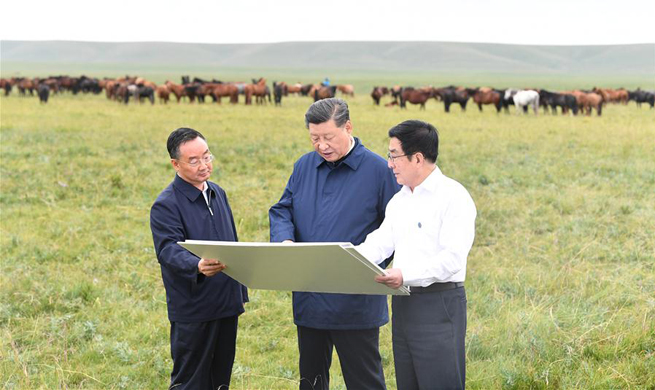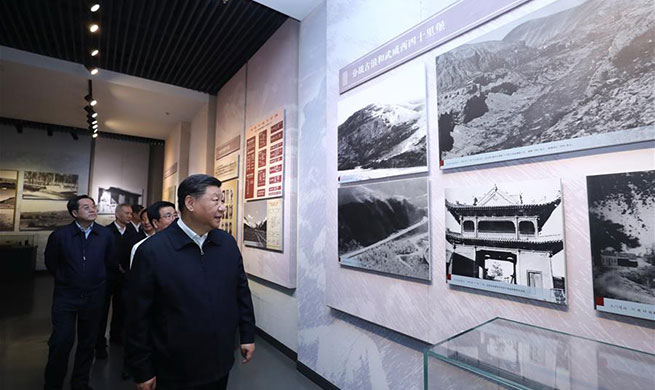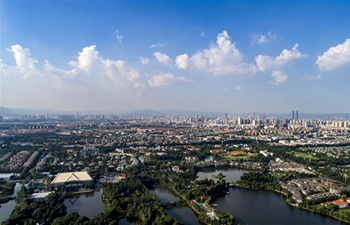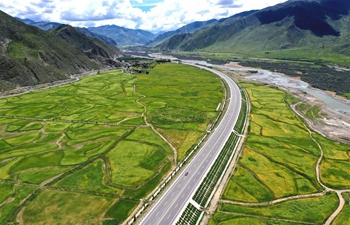NANJING, Aug. 22 (Xinhua) -- If not for the rows of parked cars outside the front gate, road travelers would be forgiven for thinking they had stumbled across the exquisite ancient gardens of Suzhou, rather than a highway rest area along their route.
Located next to the key thoroughfare linking Shanghai and Nanjing, capital of east China's Jiangsu Province, the 50,000-square-meter Yangchenghu Expressway Service Area opened last month is one of the largest highway service areas in the country.
By drawing inspiration from the ink-wash paintings of Wu Guanzhong, a leading contemporary Chinese painter, the service area has restored the aesthetic appeal and historical charm of the riverside towns in the Yangtze River Delta region with its waterscape designs, rounded arches, as well as white walls and black tiles.
"We've built three gardens right behind our commercial blocks, drawing upon spectacular Suzhou gardens like the Humble Administrator's Garden," said Tao Yuwei with the operating company of the service area.
The 248-km-long Jiangsu section of the Shanghai-Nanjing Expressway has served as an economic artery ever since it was opened in 1996. With four lanes in each direction, it has seen a growing daily traffic volume from some 1,000 vehicles to the current 110,000.
As highway trips increase, people have higher expectations of what they can enjoy at service areas besides food and fuel, a toilet or maybe some convenience stores.
The Yangchenghu Service Area is a good example that perfectly meets their diversified travel demands by offering high-quality services and an individualized experience beyond just filling up the tank.
Jin Manpei, a young mother from Wenzhou in the neighboring Zhejiang Province, took her son on a special trip to visit the popular service area and was amazed by how lavish a highway rest stop could be.
"My little boy was fascinated by the 3D image of the sky and clouds on the ceiling and those robot waiters in the restaurant," Jin said.
Standing 14 meters in height, a huge awning covers 7,000 square meters, with fresh air units installed. Visitors can also enjoy an immersive VR experience and human-robot interactions in the science and technology hall, and munch on all kinds of local specialties.
Jiangsu started to upgrade its highway service areas in 2016 and has built several iconic ones with picturesque landscapes and extensive interior facilities, creating more than 15,000 jobs and attracting over 1 billion yuan (about 141 million U.S. dollars) from non-public sectors.
Highways stretch all around China, with total expressway mileage exceeding 140,000 km by the end of 2018. The Yangtze River Delta region saw 285.5 billion yuan pumped into fixed assets of highways and waterways in the first half of this year, according to the Ministry of Transport.
Cai Renjie, chairman of Jiangsu Communications Holding Co., Ltd., said that China is in a leading position in building modernized national highway networks and promoting regional economic integration.
Improved highway establishments, like the service areas, have effectively contributed to economic and social development, he added.




